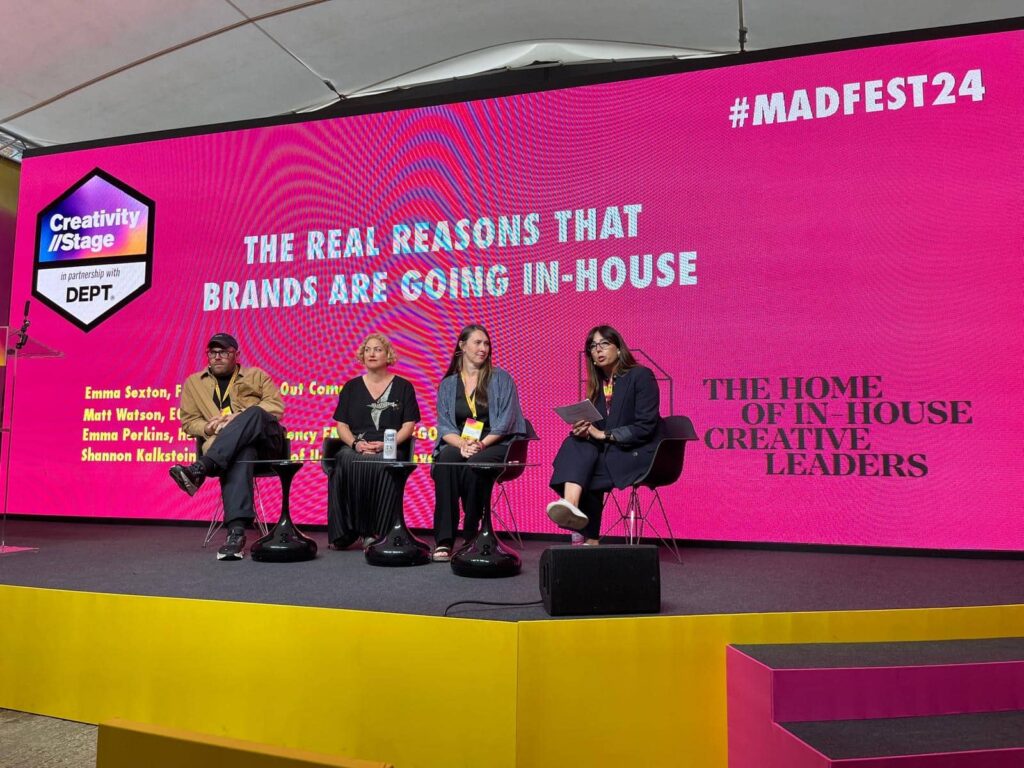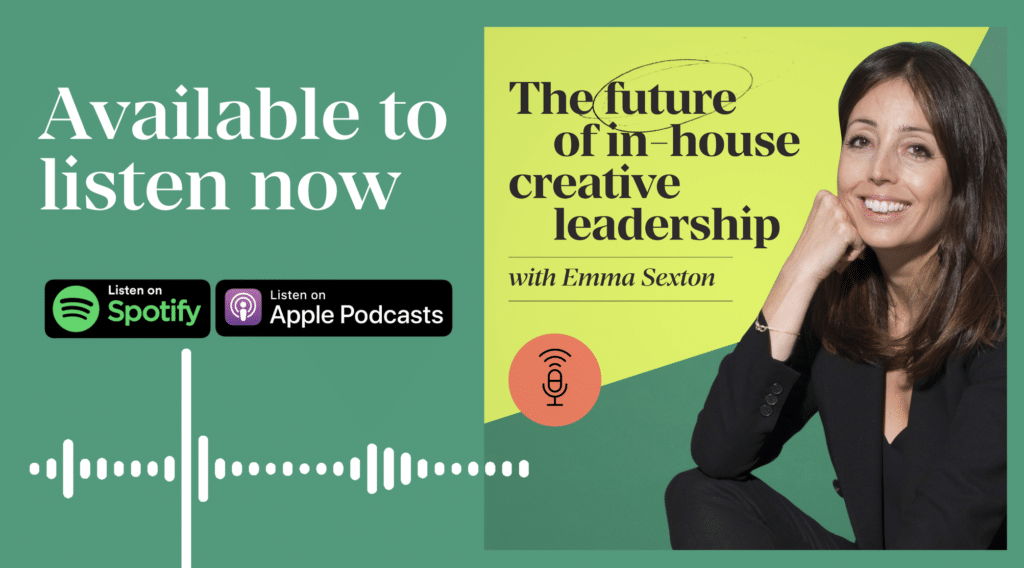Top tips from trailblazing in-house creative leaders
Over the past few months, we have had the privilege of spending time with a selection of in-house creative specialists who are leading from the front. These conversations have been captured as part of our ongoing series of Inside Conversations, an opportunity to explore career journeys, leading teams, and the power of creativity in making and shaping brands from within.
We asked 10 in-house creative leaders to share their top tips for leading an in-house creative team. With so much experience and insight shared, we thought it would be useful to bring these together into a single list of the very best advice and guidance for you to review and consider.
A big thank you to our contributors: Jamie Sterry, Global Head of Creative at Innocent drinks, Nicola Evans, RNLI; Phil Lethbridge, Creative Director at Pernod Ricard; James Turner, Creative Lead at Waitrose; Ashley Wilson, Head of Creative Studio at Gymshark; Ivan Pols, Chief Creative Officer at What3words; Paul Hewitt, Global Head of Creative at Deliveroo; Sarah Curry, Senior Brand Management & Creative Services Manager at Savills; and Lynne Isted, Head of Creative Marketing & Brand Reputation at Saga Travel Group.
YOU HAVE GOT TO HAVE A CLEAR VISION OF WHERE YOU WANT THE TEAM TO GET TO
- The team needs to know their part, the part that they play in the bigger picture.
- Have some goals for what you want to happen in the next couple of years.
- You have to make sure that the areas you are responsible for have the best people in those positions.
SURROUND YOURSELF WITH THE BEST TALENT YOU CAN, BECAUSE YOU ARE ONLY AS GOOD AS YOUR TEAM
- Make sure your team plays a prominent role in the organisation.
- Look at career progression, even if there are some tough conversations to be had.
TRY TO CREATE A CULTURE THAT’S INSPIRATIONAL AND FUN TO BE A PART OF
- Create a creative culture – you have to create something that people want to be a part of.
- Keeping your creatives creative and happy is the most important thing.
- Create an environment for your creators to thrive in.
- Create that psychological team safety.
BUILD AND FORGE RELATIONSHIPS WITH YOUR INTERNAL CLIENTS
- Sharing that knowledge and enthusiasm for the brand.
- Collaborate and empathise; it’s the best way to build relationships.
- Two heads are better than one; bring different skills and personalities together because it’s just going to open up the opportunity and the outlet.
- You need to help everyone be creative in whatever way they are comfortable with.
KNOW EXACTLY WHAT YOUR CLIENTS NEED FROM YOU, THEIR OBJECTIVES, AND WHERE THEY WANT TO GO
- Be patient with people. Don’t assume you know what’s being asked; validate it and play things back.
- Make everybody used to feedback, whether it’s positive or negative, especially when it’s from another team.
- Don’t think of yourself as a small cog in a machine. Your team is essential to the success of the brand.
- Shout about your team’s success’ at work.
DON’T SPEND TIME WORKING ON STUFF THAT JUST ISN’T GOING TO ADD VALUE TO WHERE YOU WANT TO GO
- Follow the bright spots; if something is working, keep doing it.
- Learning that sometimes you shouldn’t just tear things up and start again.
- Let the work speak for itself.


